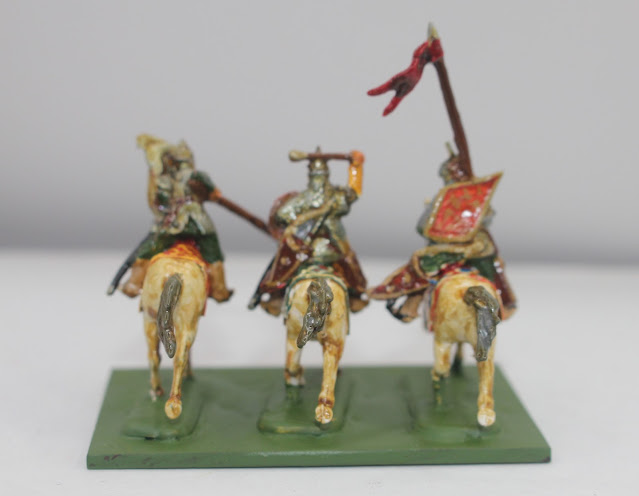Having done some artillery and been pleased with the results, I moved on to some Ottoman cavalry. This decision also followed on closely behind me finishing reading Bruno Mugnai's Helion book on the subject (Century of the Soldier no 55).
I may have to admit here that I might have been a bit cavalier with some of my earlier decision making. I took the view that broadly speaking, in terms of military attire, very little had changed from the late XVIth century to the early XVIIIth.
Well, in terms of outer garb I'm not too far off. There's probably more in the way of kaftans worn over the top of armour, but not always, and the weapons mix is slightly different, especially for foot. Where I am wide of the post is in respect of horses. Looks like by 1700 the heavy full barding is a thing of the past, so I can't really use the horses that come in the two boxes of sipahis I've bought from the RedBox range. Bit of a nuisance.
However, as luck would have it, a few years ago pre COVID, I cleared out a bring and buy selection of plastic soldiers still in their boxes at the Hereward show. This included more Celtic cavalry that I really needed. but they were 50p a box, so what are you going to do? Consequently I had a load of unbarded horses that I'm probably never going to paint. They need more elaborate saddle cloths, but more of that latter.
They don't seem to be able to decide if shields are worn slung on the back this year. Fashion, eh?





I like those, the saddle cloths have turned out well. There is so many great releases in the world of plastic soldiers, things have come a long way since the old Airfix days!
ReplyDeleteThanks. I was pleased with them, as usually I just pick out the engraved detail on figures, rather than paint free hand. You are right on the range of plastic figures available now. It is truly stunning. Mind you, some of those Airfix figures still look okay.
DeleteEver resourceful, Graham. Your horse conversions offer a believable step from ancient Celts to 1700s Ottomans.
ReplyDeleteThe Celtic horse have the most simple horse furniture to cover up.
Delete